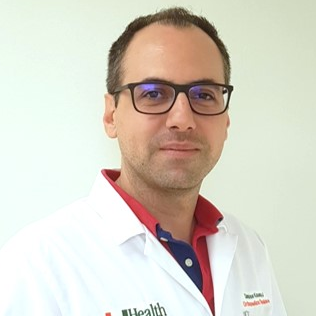Advances in Bone Regeneration with Multipotential Stromal Cells and Bioactive Materials
A special issue of Bioengineering (ISSN 2306-5354).
Deadline for manuscript submissions: closed (31 October 2021) | Viewed by 19061
Special Issue Editors
Interests: mesenchymal stem cells/multipotential stromal cells (MSCs); bone regeneration; cartilage regeneration; osteoarthritis; regenerative medicine; regenerative orthopedics; MSC senescence
Special Issues, Collections and Topics in MDPI journals
Interests: cellular biology; mesenchymal stem cells; bone marrow microenvironment; cancer immunology
Special Issues, Collections and Topics in MDPI journals
Interests: mesenchymal stem cells/multipotential stromal cells (MSCs); MSC trophic and immunomodulatory actions; MSC functionalization ex vivo; inflammation and fibrosis reversal; synovitis; osteoarthritis; regenerative sports medicine; regenerative orthopaedics
Special Issues, Collections and Topics in MDPI journals
Special Issue Information
Dear Colleagues,
The regeneration of large bone defects and fractures at risk of non-union is a serious clinical problem. Bone biological augmentation with autologous multipotential stromal/mesenchymal stem cells (MSCs) is deemed beneficial. However, clinical approaches vary considerably in terms of MSC tissue source, MSC isolation, the degree of MSC culture-expansion and priming ex vivo, and the use of biomaterial scaffolds. The aim of this Special Issue is to present a state-of-the-art update on the use of MSCs for bone regeneration. We welcome original research articles, comprehensive reviews, methods, mini-reviews, and perspectives including (but not limited to) the following topics:
- the benefits and limitations of using minimally manipulated autologous MSC isolates versus culture-expanded MSCs for bone repair;
- phenotype-based MSC isolation and/or priming, including the use of growth factors from autologous platelet concentrates;
- MSC and biomaterial functionalization, including gene-activated matrices;
- engineering of MSCs and immune cells for bone regeneration;
- personalized implants and therapies for patients with co-morbidities, including metabolic bone diseases;
- novel approaches to in vitro analysis of MSC–scaffold interactions in three-dimensional (3D) conditions;
- sensors and novel live imaging techniques for the assessment of bone regeneration in weight-bearing and non-weight-bearing bones
Prof. Dr. Elena A. Jones
Dr. Jehan J. El-Jawhari
Dr. Dimitrios Kouroupis
Guest Editors
Manuscript Submission Information
Manuscripts should be submitted online at www.mdpi.com by registering and logging in to this website. Once you are registered, click here to go to the submission form. Manuscripts can be submitted until the deadline. All submissions that pass pre-check are peer-reviewed. Accepted papers will be published continuously in the journal (as soon as accepted) and will be listed together on the special issue website. Research articles, review articles as well as short communications are invited. For planned papers, a title and short abstract (about 100 words) can be sent to the Editorial Office for announcement on this website.
Submitted manuscripts should not have been published previously, nor be under consideration for publication elsewhere (except conference proceedings papers). All manuscripts are thoroughly refereed through a single-blind peer-review process. A guide for authors and other relevant information for submission of manuscripts is available on the Instructions for Authors page. Bioengineering is an international peer-reviewed open access monthly journal published by MDPI.
Please visit the Instructions for Authors page before submitting a manuscript. The Article Processing Charge (APC) for publication in this open access journal is 2700 CHF (Swiss Francs). Submitted papers should be well formatted and use good English. Authors may use MDPI's English editing service prior to publication or during author revisions.
Keywords
- multipotential stromal/mesenchymal stem cells (MSCs)
- bone regeneration
- cell engineering
- activated matrices
- sensors and imaging
- scaffolds and biomaterials








